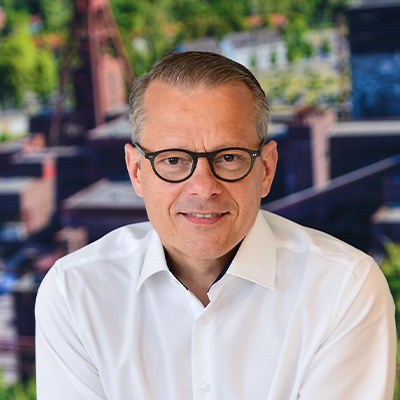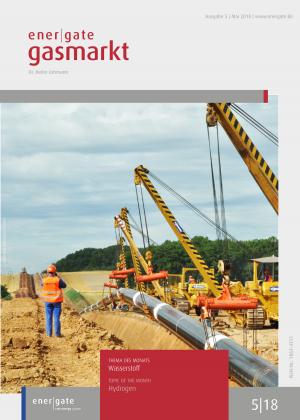On April 18,BNetzA organised the third Forum Marktraumumstellung (market region conversion) in Bonn. Congestion occurred during the forum not for L-gas but for coffee supplies. “We can’t offer you a coffee after lunch because our budget is too tight,” Achim Zerres said during his opening remarks. He is head of the authority’s energy department and moderated the workshop. The reason for the coffee “crisis”: The new German government has just started work and was not yet able to approve a regular budget for 2018. Therefore, BNetzA as a government agency is only allowed to make indispensible spending. A coffee to avoid the participants dozing after lunch is not indispensible (but morning and afternoon coffee). “I have no further terrible messages,” said Stefan Rolle, taking up the issue. Mr Rolle is head of the ministry for economics and energy’s (BMWi) security of supply unit. His task was to report about the latest proposals of the Dutch government for the Groningen production cap and the likely impact on Germany. His conclusion here in advance: The situation is unpleasant but manageable.
Stay up to date with the free Gasmarkt-Newsletter! We will inform you about new issues by e-mail and give you an insight into the contents.
- All Issues
- energate Gasmarkt
- Issue 05|18
- Issue title:
Hydrogen
- Publication date:
- 08.05.2018
- In this issue:
In this edition, the topic of the month is about a topic I have had in mind for some time: “Green hydrogen”. For a number of market participants, hydrogen that is offered carbon free may be an important pillar of future energy systems. Others think it is ridiculous as an entirely new infrastructure is needed. That this is not the case is one of the results from my report. Another interesting aspect was that “green hydrogen” can be produced in very different ways. In the current German discussion about sector coupling, one immediately thinks of “wind-hydrogen” from electrolysis. Gas producers think more about producing hydrogen from methane. Statoil is focussing on the traditional steam reforming process and the storage of CO2. Gazprom and others think that methane pyrolysis is the more efficient technology. This is not a technical publication. But the involvement of the gas producer shows that they are thinking about a post-carbon world. This may also increase our downstream options.
Also already at the end of February, Shell published its second LNG Outlook. This publication thinks the outlook is worth reading as it provides the facts about supply and demand developmentin a comprehensive and well organised form. The key message Shell wants to send with this latest outlook is: If no investment is made soon in new liquefaction capacity, there will be an LNG supply gap in the middle of the 2020s at the latest. For ener|gate Gasmarkt , the forecasting errors for the demand of LNG-importing countries is the more exciting information from the report.
In total, imports grew 30 per cent more than expected. China was one of the countries where figures were much higher than expected. LNG imports increased by 40 per cent compared to 2016. In the 2017 outlook, Shell was very reluctant about a potential LNG glut. The latest analysis emphasises that reluctance.
Sales Contact

Frequently Asked Questions
1. What is the energate Gasmarkt?
The energate Gasmarkt provides specialists and executives in the gas industry with up-to-date information and background information on the German and international gas market. The medium expertly explains the most important developments in the fields of market, law, politics and business. In addition, the energate Gasmarkt offers insider information such as market rumors and personal details.
2. What is the energate Jahresreport Gas?
The energate Jahresreport Gas traces the most important market developments of the year and provides a well-founded outlook for the coming months. Gas expert and insider Dr. Heiko Lohmann analyzes relevant events in politics, law and regulation as well as on generation, infrastructure and trade. In addition, the report provides information on changes in the corporate landscape and tracks price developments in market reports. Top decision-makers from the industry use the Jahresreport Gas as a compact chronicle of the year and to assess future market developments.
3. How often are these publications released and in which formats are they available?
The energate Gasmarkt is published monthly. Subscribers will receive the energate Gasmarkt as a print and PDF version in German and English. The Jahresreport Gas is published annually (beginning of December).
4. Can I purchase individual issues of the energate Gasmarkt?
Yes, you can purchase individual isses as print or PDF version. Payment options include purchase on account, credit card or PayPal.
5. How much is a subscription of the energate Gasmarkt and how much does the Jahresreport cost?
A subscription to the energate Gasmarkt (single licence) costs 110,- Euro/month (plus VAT). An edition of the Jahresreport Gas costs regularly 390,- euro (plus VAT).
6. Are there any special conditions if several employees in a company would like to receive the Gasmarkt?
With several Gasmarkt recipients in one company, the price of the second and all other licenses is reduced significantly. We are happy to make you a fair offer for team or corporate licenses!
7. What benefits do I get by registering?
A free energate account is required to order the energate Gasmarkt or the energate Jahresreport Gas. Registered users receive an overview of the contents of the current issue of energate Gasmarkt by e-mail on the day of publication.
8. I would like to read energate Gasmarkt or energate Jahresreport Gas digitally. Where can I find my e-paper version?
As a subscriber to energate Gasmarkt or as a purchaser of energate Jahresreport Gas, you will also receive an e-paper version in addition to the print edition. You can find it at online.energate-gasmarkt.de. Please use your energate account to log in.


